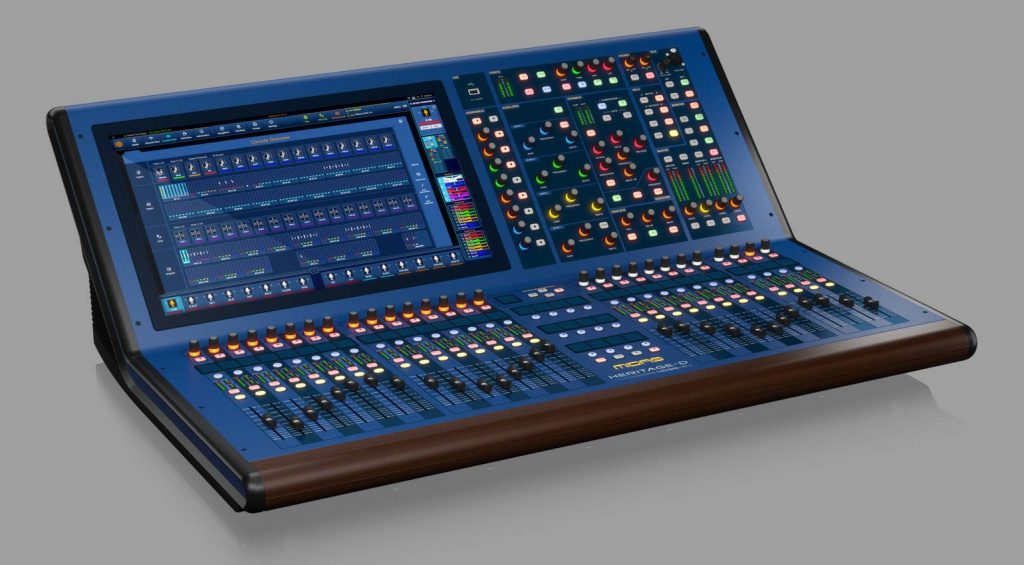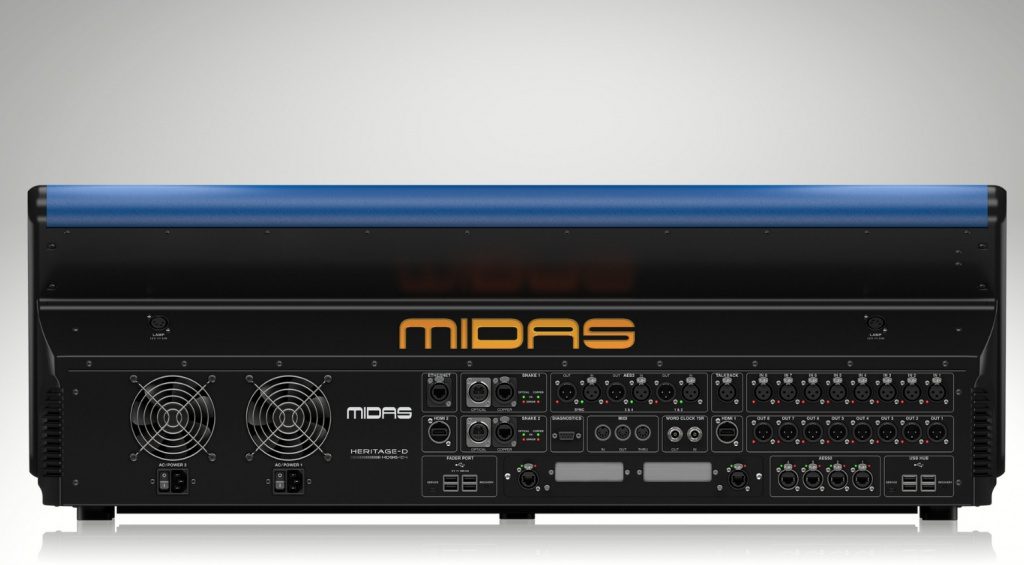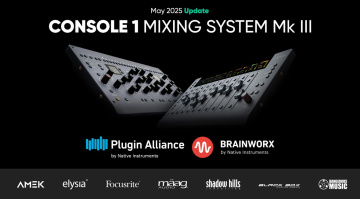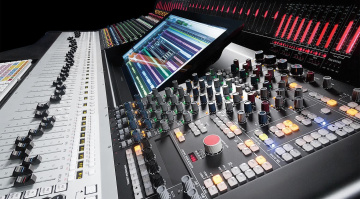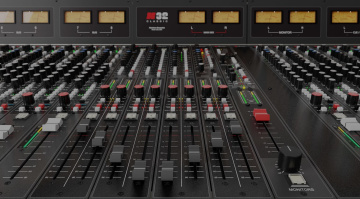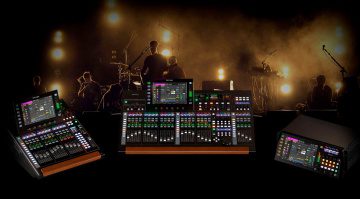Midas HD96 V2.3 Update: New Effects, Reaper Integration, and Workflow Features
The latest firmware update for the flagship Midas digital consoles.
The Midas HD96 V2.3 Update introduces a range of new features, including additional processors, expanded compatibility, and, of course, bug fixes.
About the Midas HD96:
The flagship HD96 series includes the HD96-24 and the more compact HD96-AIR, each offering 144 input channels, 123 mix buses, up to 96 kHz sample rate, and smooth touchscreen operation.
Midas HD96 V2.3 Update
First on the list of improvements, the tc electronic VSS4 reverb processor has been redesigned with a new UI makeover, a range of new presets, and it also offers greater efficiency, occupying just two effects slots per instance. Next, Midas has added a new compressor, the bbx 160A modelled on the legendary dbx 160A.
The reason why the 160A was so popular both in studios and FOH rigs is that it’s really fast and sounds good on just about anything, from drums and bass guitars to vocals. In addition, the V2.3 Update gives you access to another famous compressor, the 2500 Bus Compressor. Based on the API 2500, you can choose from a wide selection of ratios, feedforward/feedback modes, and different sidechain filter modes.
There are also improvements to the macros system, now with macros-specific crossfades that allow you to control levels, pans, and mutes, with an adjustable crossfade time. Also, macros can now be triggered from an external MIDI device by activating Global MIDI, choosing the event type, and assigning a MIDI channel. The total number of slots for storing macros has also been increased.
One of the most exciting features of the update is Reaper integration, allowing you to create tracks, access transport functions, add markers, and move the playhead according to scenes. For a full rundown of the features, check out the video, and the HD96 v2.3 update is available for download now via mCloud. You can simply follow the link below to update your console.

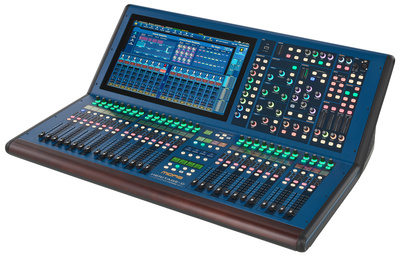
Midas HD96-24-CC-IP Live Digital Console takes up the mantle of the Heritage D
[23 Oct 2021] Bob Malkowski: Way back in 2016, we published a story about a rumoured Midas console – called the Heritage D. Now Midas has finally begun to ship the Heritage D – or the HD96-24-CC-IP as it’s also called. Although many of the specs have been known for a while, we wanted to take another, closer look at what is a major milestone for Midas.
Midas Heritage
When it comes to live sound consoles, there are a few brands that seem as old as the industry itself. And Midas has quite a legacy. In fact, a Midas console made our list of Live Digital Mixing Consoles.
“Heritage”, of course, is a name from Midas’ “greatest hits”. The analogue Heritage console was one of the consoles on stadium-level tours in the 90s and 00s. If you take a look on Midas’ website nowadays though, you’ll see that it’s digital consoles that form the backbone of the current lineup.
A Midas you can Touch
Let’s take a closer look at the new Heritage D – or the HD96-24-CC-IP, as it’s officially called. The first thing that hits your eye is, of course, that large full-colour 21″ TFT capacitive touch screen. Midas is pinning a lot around this touch screen display, describing it as “finally a Midas you can touch”.
Naturally, conventional faders and buttons still feature on the HD96-24-CC-IP. You’ll find a total of 30 100 mm faders and 66 touch-sensitive rotary controls.
Vast I/O and Mix Capability
I/O count is staggering, with 144 simultaneous inputs available at 24/96kHz, with 576 inputs and outputs available in total via AES50 and HyperMAC networking. We also understand that Dante, USB, and MADI interfaces will be available as expansion cards, further broadening the appeal of this mighty console.
In the mix, you’ll enjoy access to 24 VCAs and 96 stereo four-band EQs. As you’d expect, there’s a fully-featured, dynamically assignable FX pool; you’ll enjoy dynamics and modulation effects from TC Electronics as well as various emulations based on classic Midas processing.
Additionally, Midas has included a feature called Flexi Aux, which apparently gives the ability to send aux to aux for group or stem style mixing. This should provide greater flexibility for adding processing to IEM mixes, for example.
Graviton Mk2 Mix Engine
The quality of the mix engine architecture has a huge influence on the sound of your final mixes. With this in mind, the new console features the Graviton Mk2 mix engine. Midas says it’s a new 64-bit summing mix engine with an increased dynamic range. Looking at Midas’ blurb, they also claim to have paid a lot of attention to delay compensation in order to avoid comb filtering when mixing and summing.
The Verdict?
Looking at the feature set, the successor to the Heritage D is a hugely impressive console. What I’m struggling with a little is understanding the target audience of this desk. It’s priced considerably higher than the M32 at around €30k. And yet it seems to offer the sort of functionality that might rob customers from Midas’ more expensive touring consoles. Perhaps the smaller footprint and more portable nature of the HD96-24-CC-IP might make it more appealing to today’s mid-level tour professionals.


More Information on Midas HD96-24-CC-IP
*Note: This article about the Midas HD96 contains affiliate links that help us pay for this site. Don’t worry: the price for you will always be the same! If you buy something through these links, we will receive a small commission. Thank you for your support!

 4,3 / 5,0 |
4,3 / 5,0 | 


